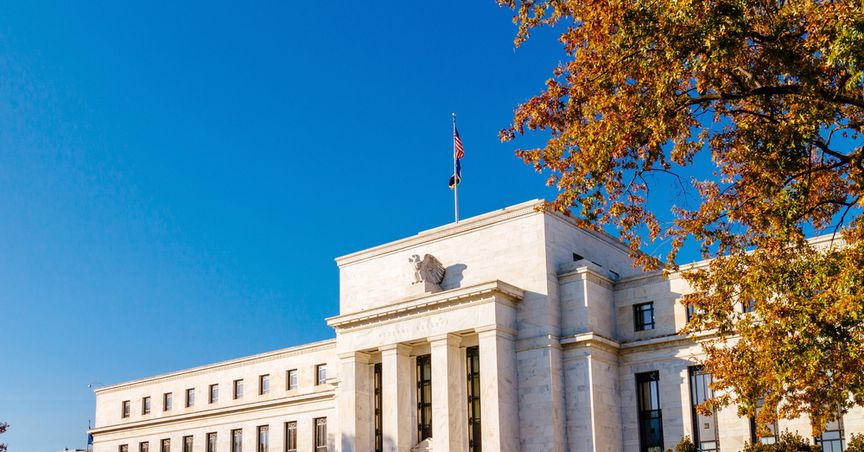The coronavirus pandemic shock has ended the longest-ever expansion cycle of the US economy with unanimity on the economy falling into recession. Now, increasing restrictions by the government on public gatherings and business to stop the virus spread is resulting in growing fears of a more severe downturn.
Coronavirus that originated in the Wuhan district of China has infected more than 1,87,302 people in US killing 3,846 people till date, crossing the death toll of China (3327) with no signs of subsiding.
Markets are swinging violently and have still not priced the damage from the virus.US has reported by far the highest number of coronavirus cases amongst countries forcing shutdowns and social-distancing guidelines to extend till 30 April which could trigger unemployment.
US Manufacturing PMI plunges in March
The US saw a record plunge in the business activity in March. As per IHS Markit data released on 1 April, Final US Manufacturing Purchasing Managers Index (PMI) for US fell to 48.5 (revised from 'Flash" figure of 49.2) in March from 50.7 in February.

Source: IHS Markit
The sharp downward spiral in output and new orders due to demand slump arising from COVID-19 outbreak were the significant drivers behind the fall in PMI. Massive lockdowns to confront the virus spread led to the closing of factories, robust fall in the workforce figures. The uncertainty regarding the recovery, extent and the duration of lockdowns resulted in lower confidence.
Record claims filed for unemployment benefits
Millions of American workers filed for unemployment benefits in the past two weeks as the epidemic pushed several workers out of their jobs. As per Department of Labour, about 6.6 million workers filed for initial jobless claims in the week ending 28 March, an uptick of 3.3 million from previous week's revised level, the highest level of initial claims in the history.
Below is the graph showing massive hike in the claims filed in the week ending March 28 compared to last year.

Source: US Department of Labour
Several states registered a rise in initial claims for the week closing 21 March. The largest increase was in Pennsylvania (+362,012), Ohio (+189,263), Massachusetts (+141,003), Texas (+139,250), and California (+128,727).
Long lines at the unemployment offices, jamming of phone lines and crumpling of websites were some of the common behaviour of the people in the week ending 27 March due to an increased number of claims.
The spike in the claims was attributed to massive layoffs and more generous unemployment benefits after President passed USD 2 trillion stimulus bill with benefits now being extended to self-employed and gig economy workers.
Firms forecast US falling into recession
Firms are predicting sharp drops in US GDP with coronavirus pushing the US economy into a recession.
Fitch ratings expect US GP to decline by 3.3% in 2020 due to the rising spread of coronavirus. It expects US unemployment to reach 10% in Q2 2020, rendering 10 million workers jobless.
Bank of America officially declared that US has entered into recession. The firm anticipates US GDP to fall by a massive 12% in the second quarter and a 0.8% annual contraction for the economy.
The firm expects the unemployment rate to double with 1 million jobs lost each month in Q2 pushing a total of 3.5 million out of work.
ALSO READ: US Stories Over a Cup of Tea; Interplay Between Stimulus and Equity Charters
Goldman Sachs anticipated US GDP to fall by a massive 34% compared to an earlier 24% in Q2 2020, almost three-and-a-half times the 10% drop in Q1 of 1958, due to coronavirus pandemic. Unemployment is anticipated to surge to 15% by mid-2020, up from a previous projection of 9%.
A sharp surge in layoffs, widespread lockdowns, spending slump and massive shutdowns of factories, stores, schools and offices will result in the sharp drop in US GDP. However, the firm expects US economy to spike by 19% in Q3 backed by monetary and fiscal easing.
Fed's St. Louis stated the US could lose 47 million jobs translating to 32.1% unemployment rate. The firm believes it to be a unique shock which is not experienced by the US economy in the last 100 years.
Hence, several firms are predicting worst of economic fallout from the virus outbreak resulting in a sharp drop in GDP and spike in unemployment figures.
Steps taken by the Government
White House and Federal Reserve have made some policy changes to bolster US economy amid the virus. Donald Trump has passed USD 2 trillion bill to provide direct cash payments to Americans, provided relief to small businesses and expand unemployment benefits to jobless workers to stimulate the economy. The Fed has taken charge by cutting interest rates to zero and buy at least USD 700 billion in Treasury and mortgage-related bonds.
Moreover, the government passed Coronavirus Aid, Relief and Economic Security (CARES) CARES Act to offer monetary aid to small businesses on 27 March. On 2 April, the US Department of Labor announced new CARES Act guidance on the unemployment insurance programs including Pandemic Unemployment Assistance (PUA) for workers not eligible for unemployment benefits to tackle COVID-19 impact. Workers who are independent contractors, self-employed, gig workers or with limited work history will be qualified to get benefits if they are not able to work due to COVID-19.
While the policy measures taken up by the government to stimulate the economy will certainly help, they cannot work as a quick fix for the coming recession and bleak confidence in the economy.
The social distancing measures, increased testing and lockdown are likely to lower new infections. However, further stimulus measures are expected looking at how the labour market corroded within weeks. Market uncertainty and downside risks continue to dominate the economy but longer lockdowns in a bid to contain the virus can hurt the 2020 GDP more.




_07_02_2025_00_23_12_199043.jpg)
